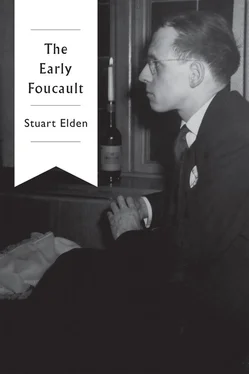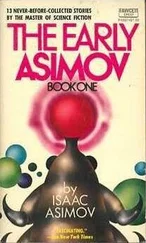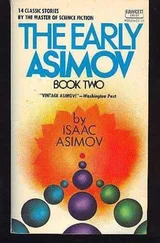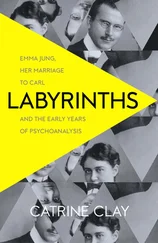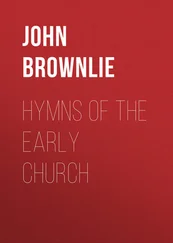1 ...8 9 10 12 13 14 ...18 Foucault’s early publications have only limited relation to what he heard in these seminars. Maladie mentale et personnalité was completed in late 1953, and the Binswanger introduction over Easter 1954. As Chapter 4will note, there is one indication in the introduction of something he probably heard in a seminar; and Chapter 3notes how Lacan may have influenced the reading of Freud in Maladie mentale et personnalité . Foucault’s relation to Lacan will be discussed further in The Archaeology of Foucault .
Yet perhaps the most significant early influence in psychology comes from a figure who might be thought to play a more important role in Foucault’s understanding of philosophy, Merleau-Ponty. Merleau-Ponty had made his reputation with The Phenomenology of Perception , his 1945 primary thesis. 149But Merleau-Ponty’s secondary thesis, The Structure of Behaviour [ comportement ] was actually published first, in 1942, and was perhaps more significant for Foucault. 150As the book begins, Merleau-Ponty states that his ‘goal is to understand the relations between consciousness and nature: organic, psychological or even social. By nature we understand here a multiplicity of events external to each other and bound together by relations of causality.’ 151Yet Merleau-Ponty does not structure his enquiry on the basis of a subject who perceives, but grounds it on the basis of the psychological and biological research of the time. However, his argument is that the Gestalt theorists did not fully appreciate the consequences of their research. In demonstrating that even the simplest experience was structured by an underlying form, rather than learned, their work fundamentally challenged knowledge and being. What is clear from both these early works is that scientific research provides a rich resource for his enquiries. Biology and psychology, especially, can be used to resource his philosophical enquiry. While he does not use them as a foundational basis, nor does he share Heidegger’s critical position that ‘no result of any science can ever be applied immediately to philosophy’. 152In the Preface to the second edition Alphonse de Waelhens explains Merleau-Ponty’s distance from Heidegger: ‘But in Being and Time one does not find thirty lines concerning the problem of perception; one does not find ten concerning that of the body.’ 153For Foucault, studying both psychology and philosophy, the rich interrelation of these themes in Merleau-Ponty’s work was clearly appealing.
In a wide-ranging 1978 interview with the Italian Marxist Duccio Trombadori Foucault notes the Hegelian influence of Wahl and Hyppolite, but suggests Merleau-Ponty was something more than that. He was both ‘a meeting point between the academic philosophical tradition and phenomenology’, but also took this work into a range of related fields, including ‘the intelligibility of the world, the real’ (DE#281 IV, 48; EW III, 247). Later in the same interview he expands: ‘A whole aspect of phenomenology took the form of an interrogation of science, in its foundation, its rationality, its history. The great texts of Edmund Husserl, of Alexandre Koyré, formed the other face of phenomenology, opposite the more existential phenomenology of the lived [ le vécu ] . . . In many respects, the work of Merleau-Ponty was an attempt to recapture the two dimensions of phenomenology’ (DE#281 IV, 53; EW III, 252). A few years earlier he had told Mauriac of his ‘fascination’ with him. 154
A wide range of Merleau-Ponty’s lecture courses are published, some of which Foucault attended. Merleau-Ponty’s 1947–8 course Malebranche, Biran and Bergson on the Union of Body and Soul was delivered both at the University of Lyon and the ENS. 155The published edition is based on the Paris lectures, using audience notes because the original manuscript is missing. In the second edition, these notes are compared to those from Lyon by Michel Jouhaud, which shows that it was essentially the same course. Foucault attended in Paris, and Jacques Taminiaux tells the story of being told about the course by a friend, who said his own notes were ‘imprecise and not very legible’, and suggested that he speak to Foucault instead. Taminiaux says that Foucault ‘very graciously loaned me his notebook of lecture notes which were indeed very clear and detailed’. Taminiaux says that the notes were much read, but not copied by him, and so he was sorry when Foucault asked to retrieve the notes, something he suggests shows ‘how important and inspiring these lectures were for him’. 156
Reading the course now it is hard to see what inspired Foucault so much. The course was written to link three thinkers who were on the curriculum for the agrégation that year. The topic of the body–soul relation was one that Merleau-Ponty had discussed in both The Structure of Behaviour and The Phenomenology of Perception and, while he was bound by the constraints of the curriculum, he nonetheless puts plenty of himself into the material. One crucial theme is the discussion of extension, and the critique of Descartes’s understanding of space. 157This, as in Merleau-Ponty’s wider work, is challenged by a corporeal spatiality. 158Foucault later recalls that it was in 1948 that Merleau-Ponty began engaging with Ferdinand de Saussure’s work on linguistics; a theme that continues into his later courses. 159Foucault’s interest at this time was quite different from the History of Madness . While that became his eventual doctoral thesis, his first, abandoned thesis was on the philosophy of psychology (see Chapter 2).
Merleau-Ponty taught at the Sorbonne from 1949–52, as Professor of Child Psychology and Pedagogy, succeeding Jean Piaget. Merleau-Ponty’s eight courses there concentrated on themes within the remit of his chair, from the consciousness and acquisition of language to their relation to others and the adult’s view of the child. Only one course was on a theme directly related to his better-known research interests – ‘The Human Sciences and Phenomenology’. Student notes from these lectures were transcribed, and approved by Merleau-Ponty for publication. They appeared in the University of Paris’s Bulletin de psychologie , and then in various collected editions. 160Foucault references some of these in an unpublished manuscript on Merleau-Ponty (see Chapter 4). 161Some of the courses were translated into English in book form or in collections, before the definitive edition was translated entire. 162
Merleau-Ponty was elected to the Collège de France in 1952, where he gave a sequence of courses on themes including the world, language, speech, institution, passivity, nature, ontology and philosophy today. 163These courses were brought to an abrupt end with his premature death at the age of fifty-three on 3 May 1961, just over two weeks before Foucault’s thesis defence. For much of Merleau-Ponty’s Collège de France career then, Foucault was outside France. Foucault could have attended Merleau-Ponty’s earliest courses there, but there is no indication that he did. In his inaugural course The Sensible World and the World of Expression from 1953, Merleau-Ponty explores ideas about space, time, the body and perception, which connect back to his Sorbonne lectures, but also to Foucault’s own research interests at the time. 164Merleau-Ponty shows how behavioural psychology and Gestalt theory can provide empirical background for thinking about fundamental questions of the relation of the subject and the world. There can be no fixed division between material things in the sensible world and cultural things of the world of expression. 165
Through his years at the Sorbonne and Collège de France, Merleau-Ponty published several other works, which tended to be works of political theory or collections of essays on art and other themes, rather than major philosophical works like his first two books. These later books include Humanism and Terror and Adventures of the Dialectic , and Sense and Non-Sense and Signs . Two incomplete manuscripts were published posthumously: The Prose of the World and The Visible and the Invisible . 166Many assessments of Foucault and Merleau-Ponty concentrate on the books, and draw contrasts between a thinker in the phenomenological tradition, and one who sought to move beyond it. 167Indeed, Foucault sometimes uncritically groups Merleau-Ponty with Sartre as representatives of a tradition from which he wished to disassociate himself (i.e. DE#55 I, 662; FL 55; DE#109 II, 372; FL 98; DE#361 IV, 764; EW II, 467). But Merleau-Ponty’s lectures bridging psychology and philosophy are arguably more significant for Foucault’s early development.
Читать дальше
